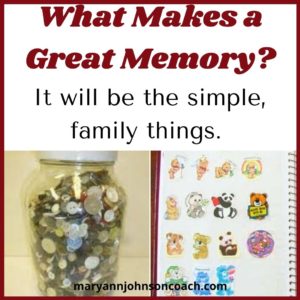 Back in 2012, I read an article by Kerry Patterson of the Arbinger Institute, a company designed to build leaders and businesses. He has also helped author several wonderful books designed to help people have better relationships in families, at work, and in communities. I have enjoyed reading his work for many years. This article, which was published around the holidays, beautifully showcased the power of love. I am sharing it with you because it is powerful. I hope it will bless you and help change your life. : )
Back in 2012, I read an article by Kerry Patterson of the Arbinger Institute, a company designed to build leaders and businesses. He has also helped author several wonderful books designed to help people have better relationships in families, at work, and in communities. I have enjoyed reading his work for many years. This article, which was published around the holidays, beautifully showcased the power of love. I am sharing it with you because it is powerful. I hope it will bless you and help change your life. : )
The Power of I Love You by Kerry Patterson
Typically, this time of year, I write a piece about the holiday season. This year, I’ve penned a story that took place years ago—during the late spring—nowhere close to the holidays. Nevertheless, even though the tale doesn’t involve presents, or mistletoe, or anything remotely festive, I think it captures the spirit of the season.
The other day, while my three-year-old grandson, Tommy, and I took a walk through the neighborhood, the little guy picked up a rock and tossed it into an irrigation ditch. And then, in the non-sequiturial manner that defines three-year-olds, he looked up at me and whispered, “I love you.” Much to my delight, Tommy tells me this quite often, but on this particular day, there was something about the circumstances that jarred loose the memory of an incident I hadn’t thought about for over half a century.
This particular memory started with what should have been a harmless trip to the grocery store. It was the spring of 1953, I was seven years old, and Mom decided she needed to fetch some milk in order to finish a batch of chocolate pudding. Five minutes later, as Mom, my brother Billy, and I rolled up to the grocery store, Mom spotted her best friend Lydia. “I’m going to be chatting for a while,” Mom barked. “Why don’t you boys play outside with the kids in the neighborhood?”
I was hungrier for snacks than I was for companionship, so I set off in search of discarded pop bottles in nearby gutters. If I got lucky, I’d find a few bottles and trade them in for penny candy. At age eleven, my brother Billy was hungrier for adventure than for sweets, so he set off for points unknown.
After talking with Lydia for nearly half an hour, and with a quart bottle of milk firmly tucked under her arm, Mom stuck her head outside the store and shouted, “Boys, it’s pudding time!”
With the promise of chocolate hanging in the air, I raced back to the store—but Billy was nowhere to be seen. “Go find your brother,” Mother exhorted. “He’s probably down by the creek.”
The creek Mom referred to flowed through the countryside a couple of blocks north of the store until it abruptly disappeared into a four-foot-high cement culvert that carried the water underground for two miles. The tunnel was filthy, dark, dangerous, and chock full of rats. In short, it was boy heaven.
Unfortunately, just getting to the creek posed a serious challenge. The route went past the McHenry house and the McHenry house was filled with stone-cold criminals. The adult McHenrys (when not in prison) were constantly tossing back home brew while feverishly hammering on the pile of rusted auto parts that was their front yard. The McHenry boys, ever anxious to please their parents, cursed, spat, and sic’d their dogs on anyone who had the temerity to breach their territory. I was about to be their next victim.
But I got lucky that day. As I walked toward the creek, the McHenrys were nowhere to be found. Seizing the moment, I dashed passed their den and down to the tunnel entrance. Whew! I had made it!
And then I faced a new challenge. If my brother was, indeed, playing in the culvert, I’d have to shout out a password before he’d let me in. It was kid code. My friends and I were always using secret words such as “Open sesame” to gain entry into our forts or to earn freedom from captivity should the “enemy” lock us up. This system worked quite well except when we changed or forgot the password, which was most of the time.
“Open sesame!” I hollered as I rounded the bend near the mouth of the tunnel. I heard nothing from Billy. “Open sesame!” I tried again, followed by silence and then a resounding “Geronimo!” which also had no effect. Next, I tried, “Montezuma!” Then “Beelzebub!” Still no response. Just when I was about to whip out the granddaddy of all passwords—”Code red!”—I was yanked off my feet and held in the air—thrashing like a gaffed salmon. Craning my head to see who had ahold of my collar, I stared into the face of Chuck McHenry, the oldest and foulest of the McHenry boys.
“Lookin’ for your brother, are ya?” Chuck asked with breath that could stop a bullet. “Cuz if you are, me and my brothers have him trapped.”
Sure enough, a few feet away stood two of Chuck’s teenage brothers. They were throwing rocks into the mouth of the tunnel as if competing in some sort of sadistic carnival game. Eleven-year-old Billy would peek out of the culvert opening to see if the coast was clear and then the McHenrys would hurl jagged rocks at his head.
“Leave my brother alone!” I hollered as I tried my best to kick the McHenry ringleader. Chuck merely laughed. I was seven; he was in his late teens. Fighting was useless. After I tried to break away for what seemed like an hour, Chuck offered up a plan: “If you want us to let your brother go, you’ll have to do somethin’ for it.”
“What?” I asked.
“What do you guys think?” Chuck questioned his brothers. “Should we make him run naked through stinger nettles?”
“Maybe we should hang him by his heels from a tree!” one of his brothers chimed in. “I got it!” Chuck announced as he nodded his head knowingly. I couldn’t imagine what he had in mind, but whatever demented stunt he had concocted, I’d gladly do it. Billy was my best friend, my protector, my big brother.
Then, with a grin that suggested he had just devised the most nefarious punishment ever, Chuck announced: “Tell your brother—in a loud voice—that you love him!” I was confused. This was all he wanted? To tell my brother that I loved him? “Go ahead,” he chided. “Say it! I dare you!” “I love you!” I shouted to my brother.
The McHenry boys then hooted and howled. From their point of view, I had just humiliated myself beyond repair. Right there in front of the whole neighborhood, I, a boy, had been tender and sensitive. Worse still, I had dared to say, “I love you”—to my brother no less! Ugh! As far as the McHenrys were concerned, I had completely disgraced myself.
Finally, after nearly laughing himself sick, Chuck tossed me to the ground and threatened to “pound” my brother and me if either of us said a word to our parents. Then, tiring of the whole affair, Chuck turned on his heels and darted back to his lair—his brothers close behind.
After checking to see if the thugs had really gone, Billy cautiously climbed out of the tunnel, took my hand, and walked me back to the grocery store. “Don’t tell Mom what just happened,” Billy warned. “If you do, the McHenrys will beat us for sure.”
“Plus, if we tattle, Mom will ask us what we learned,” I added. Then we both laughed at the thought. Mom was always asking us what we had learned from our latest debacle and to be honest, I didn’t have a clue what I had just learned. I could say that I had learned not to play in the culvert or go near the McHenrys—but I already knew that.
No matter what we were supposed to have learned that morning, the incident remained locked deep inside my brain until a few days ago when my grandson, Tommy, tossed a rock into a stream and told me he loved me. And then, like an orb tumbling out of a gumball machine, the McHenry memory tumbled out of the dark recesses of my mind and onto these pages.
I’m glad it’s been nearly sixty years since the original event took place because now, I’m mature enough to know what I learned that day. And I’ll be darned if I hadn’t learned it from the most unlikely of characters—Chuck McHenry. The lesson couldn’t be clearer. When threatened by your worst enemy, when going toe-to-toe with the adversary, remember the secret password. Not just any password, but the password.







 I received a call from my sister, Rozanne. She was giving me an update on a difficult situation in her life. It was such a profound example of taking responsibility for your responses and choosing to let go of suffering, I asked her if I could share the experience with you.
I received a call from my sister, Rozanne. She was giving me an update on a difficult situation in her life. It was such a profound example of taking responsibility for your responses and choosing to let go of suffering, I asked her if I could share the experience with you.
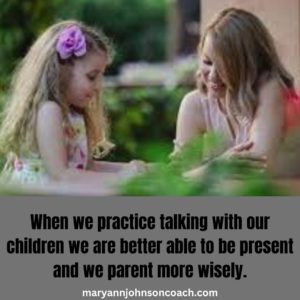 6 Tips for Talking With Kids
6 Tips for Talking With Kids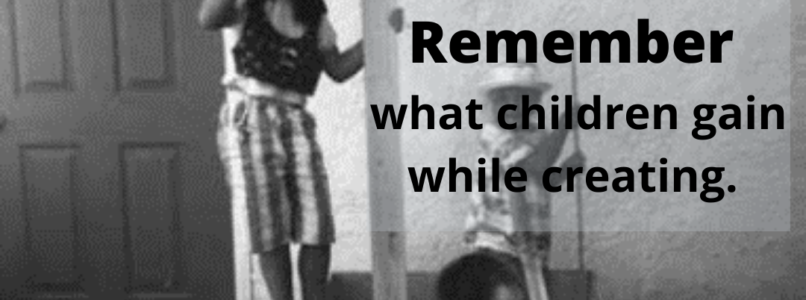
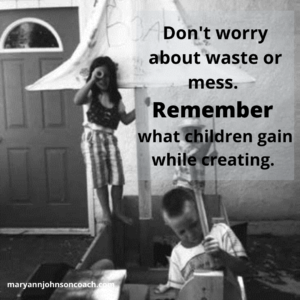 A mother asked me how I handled it when my children wanted to make something that I knew wouldn’t be used after it was created. How did I feel about the waste of resources and the mess that would be left? That is a great question. In fact, this same question comes up often when I am working with moms, and I have put some thought into it and decided that an even better question would be:
A mother asked me how I handled it when my children wanted to make something that I knew wouldn’t be used after it was created. How did I feel about the waste of resources and the mess that would be left? That is a great question. In fact, this same question comes up often when I am working with moms, and I have put some thought into it and decided that an even better question would be: paper roll tubes, and tons of glue, expensive ‘real sticky glue’ as he called it. It turned out spectacularly, but it didn’t have any use. It was too big and not sturdy enough to hang on a wall. It lay on the concrete at the bottom of the back steps to be admired by the whole family until it rained. Then all the pieces were gathered up by an adult and taken to the dump.
paper roll tubes, and tons of glue, expensive ‘real sticky glue’ as he called it. It turned out spectacularly, but it didn’t have any use. It was too big and not sturdy enough to hang on a wall. It lay on the concrete at the bottom of the back steps to be admired by the whole family until it rained. Then all the pieces were gathered up by an adult and taken to the dump.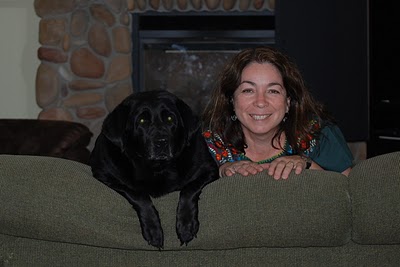
 I knew a BIG black dog named Majestic. He belonged to my friend Cathy. I am sure that in his prime, he was majestic. But when I knew him, he was far along in age and had begun to slow down…a lot! His hips hurt, and his eyesight had gone.
I knew a BIG black dog named Majestic. He belonged to my friend Cathy. I am sure that in his prime, he was majestic. But when I knew him, he was far along in age and had begun to slow down…a lot! His hips hurt, and his eyesight had gone.
 I heard something on TV recently, of all places, and I thought it was worth passing on because the truth is, when you do work outside of your family, regardless of what it is, it is tough to ‘be home’ and leave that work at work.
I heard something on TV recently, of all places, and I thought it was worth passing on because the truth is, when you do work outside of your family, regardless of what it is, it is tough to ‘be home’ and leave that work at work.
 I have a friend, Ann, who has taught children with special needs for 16 years. I have been in her classroom, and she is terrific. But this year, she retired, and her kids miss her.
I have a friend, Ann, who has taught children with special needs for 16 years. I have been in her classroom, and she is terrific. But this year, she retired, and her kids miss her.
